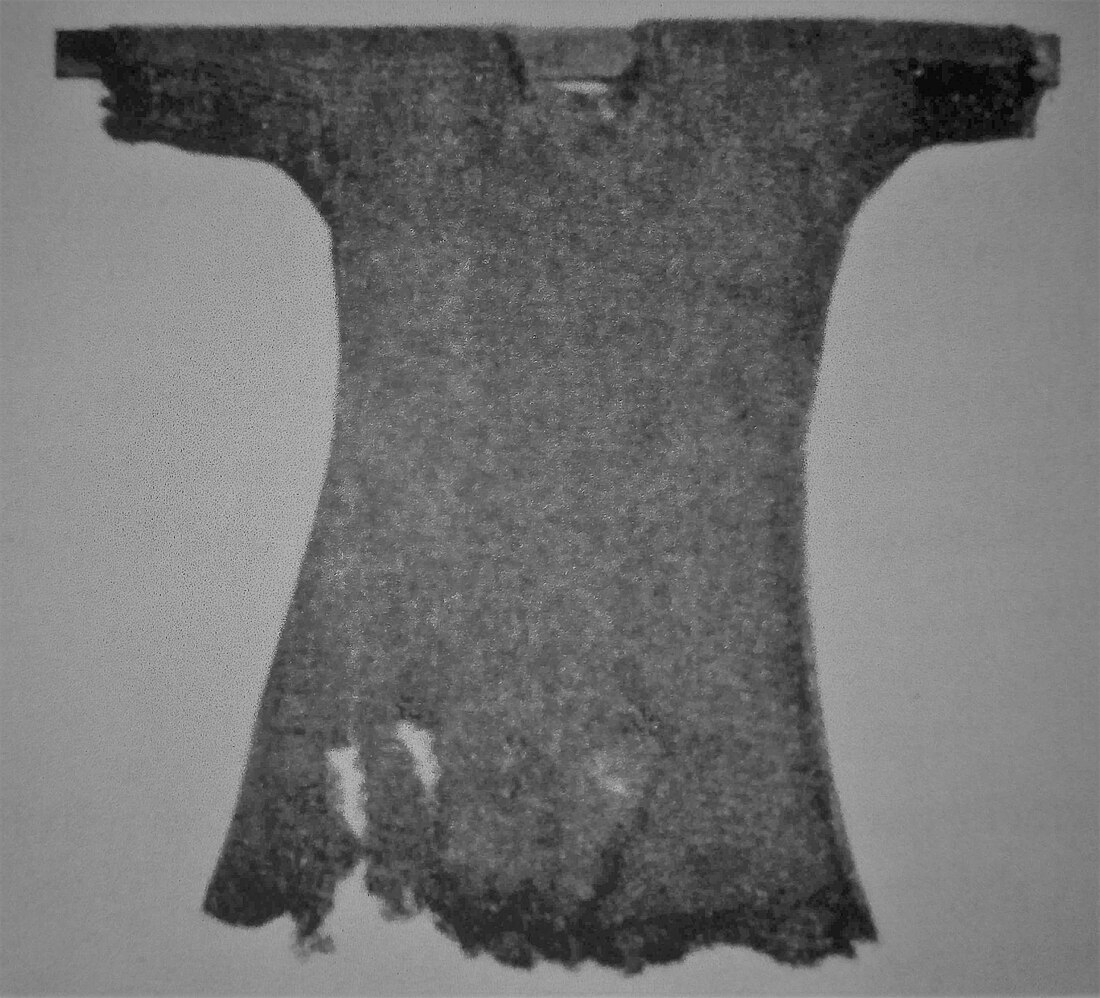Baju Rantai
Nusantaran chainmail armor From Wikipedia, the free encyclopedia
The Baju Rantai (also known as Badjoe-Rante, Baju Besi, Baju Rante, Wadjoe-Rante, and Waju Rante) is a type of armor from Nusantara archipelago (Indonesia, Malaysia, Brunei, and Philippines).

Etymology
The name originates from old Javanese words, baju comes from waju meaning jacket, clothing or apparel,[1]: 2174 meanwhile rantai comes from rante, rantay, or ranti which mean chain, string, or wreath.[1]: 1504
Description
The Baju Rantai is a chain armor that is worked in the form of a shirt. It consists of small iron rings. It has no collar and sleeves that reach about to the elbow. The lower end is approximately at the height of the thighs. It is used by various ethnic groups in Indonesia.[2]
History
Summarize
Perspective


One of the earliest mentions of Baju Rantai is in a Balinese inscription of Tamblingan, recorded as baju besi. The Tamblingan Pura Endek I Lempeng Besar I inscription records the existence of armor makers in Bali. This inscription is thought to have originated from the year 844 Saka (922 AD). The contents of the inscription were:
...thani anteken ya parmasan ulih juru pande, apan khu tumkap baju besi.
...they are not subject to parmasan fees by the master smiths (juru pande) because they make armor (baju besi).
This indicated that the Tamblingan people are not subjected to a parmasan fee by the master smiths because they make baju besi armor.[3]: 12
The Kidung Panji Wijayakrama-Rangga Lawe, a javanese kidung text that tells about the rebellion of Rangga Lawe against Majapahit in 1295 A.D. mentioned waju rante, which means apparel consisting of iron chains. Zoetmulder noted the use of special apparel for soldiers: In his research about old Javanese he found a troops called bala winaju gangsa ranti,[4]: 1370 which means soldier dressed with gangsa ranti. Gangsa (from sanskrit: kangśa) refers to a kind of copper and lead alloy,[4]: 275 while ranti means chain.[4]: 919
The Hikayat Banjar noted the Bhayangkara equipments in the Majapahit palace, which includes:
Maka kaluar dangan parhiasannya orang barbaju-rantai ampat puluh sarta padangnya barkupiah taranggos sakhlat merah, orang mambawa astenggar ampat puluh, orang mambawa parisai sarta padangnya ampat puluh, orang mambawa dadap sarta sodoknya sapuluh, orang mambawa panah sarta anaknya sapuluh, yang mambawa tumbak parampukan barsulam amas ampat puluh, yang mambawa tameng Bali bartulis air mas ampat puluh.
So came out with their ornaments men with chain mail numbered forty alongside their swords and red kopiah [skull cap], men carrying astengger [arquebus] numbered forty, men carrying shield and swords numbered forty, men carrying dadap [a type of shield][i] and sodok [broad-bladed spear-like weapon][ii] numbered ten, men carrying bows and arrows numbered ten, (men) who carried parampukan spears[iii] embroidered with gold numbered forty, (men) who carried Balinese shields with golden water engraving numbered forty.
— Hikayat Banjar, 6.3[10]: Line 1209–1214 [11]: 204–205
Two related ethnic communities of South Sulawesi, the Bugis and Makassarese, also adopted chain mail armor which they call as waju rante or waju ronte. The armor is made by string of iron rings tied together, which makes it similar to knitwork.[12]: 39 The Bugis and Makassarese soldiers were known for using chain mail and muskets which they made themselves.[13]: 431
In the 17th century, Javanese cavalry is commonly equipped with chain mail armor, for example in 1678 Captain Tack met 240 horsemen who all wore armor, who were lancers with chainmail. Trunajaya cavalry was composed of about 150 men armed with lances and most of them wore chain mails. Bantenese royal vessels are noted to have rowers wearing chain mail.[14]: 127
See also
Wikimedia Commons has media related to Baju rantai.
Notes
- For the meaning of sodok, see[8]
- Rampuk likely derived from Old Javanese rampog and ngrampog, which means "to attack in great numbers". Old Javanese watang parampogan means a pike used in the parampogan, that is, tiger spearing (rampokan macan).[9]
References
Further reading
Wikiwand - on
Seamless Wikipedia browsing. On steroids.
